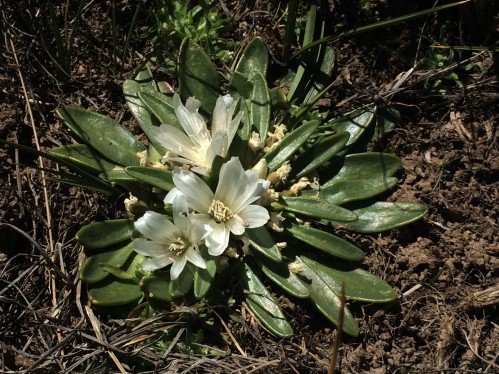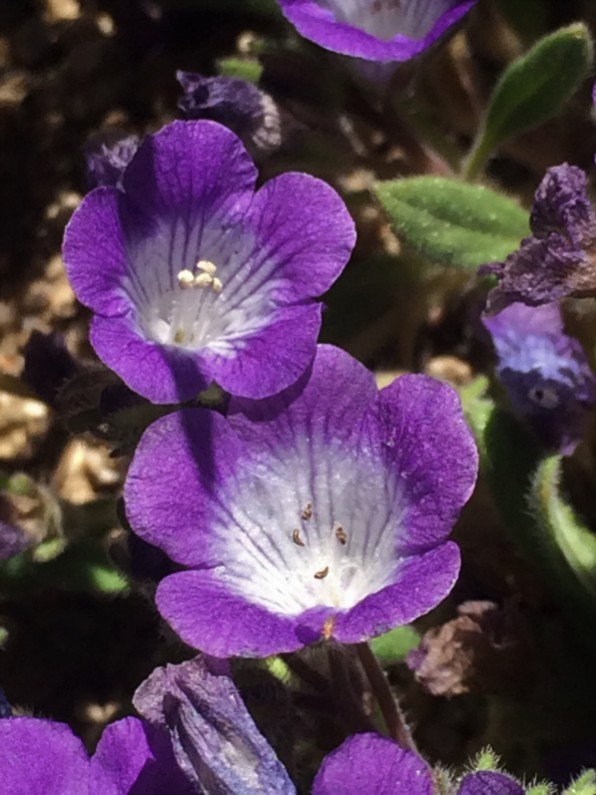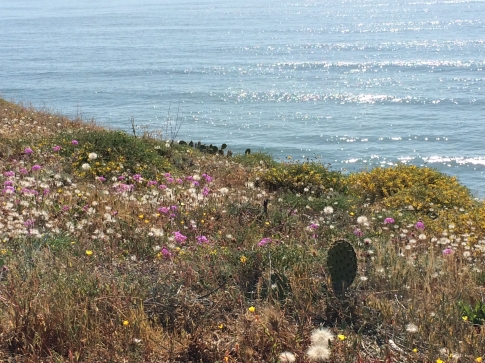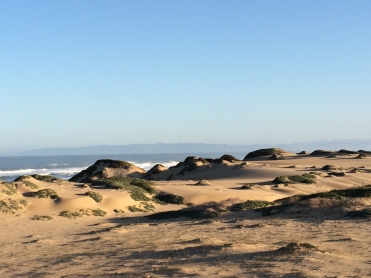From the Chimney Peak Wilderness, I drove through the (now mostly flowerless) desert, to the northern San Bernardinos. The San Bernardino Mountains are the Easternmost of California’s Transverse Ranges. They quickly rise out of the southern Mojave Desert, topping out at well over 11,000 feet, making them tallest Southern California. Due to their size and location, they are extremely diverse, combining elements of the Peninsular and Western Transverse Ranges, the Desert mountains to the east, and even the Sierras far to the north. But most excitingly, they have many plants found here and nowhere else, particularly in the mid-elevations (~6,500-8,000 feet) around Big Bear Lake. This area has a unique habitat called pebble plains. These are flat places covered in small quartzite rocks that were deposited during the last ice age. Because the soils are too rocky for trees to put down roots, the habitat is open for tiny annual plants to thrive. Additionally, a whole second set of rare plants occurs in the treeless wet meadows that occur in some of the small valleys. In the pictures below, if the background is tan and rocky, the plant is on a pebble plain. If the background has dark soil, the plant is in a meadow (I found some of the plants in additional habitats as well). Okay, enough talk–onto the plants. I found so many uncommon and rare plants, I’m just going to skip some of the less showy ones. In addition to the usual common name and family, I’ll also put where else the species occurs in parentheses.
Horkelia rydbergii (Rydberg’s Horkelia, Rosaceae, Transverse Ranges)

Lewisia brachycalyx (Short-sepaled Bitterroot, Montiaceae, only the Peninsular Ranges in CA, but elsewhere in the western US)

Linanthus killipii (Balwin Lake Linanthus, Polemoniaceae, nowhere else)

Mimulus purpureus (Little Purple Monkeyflower, Phrymaceae, nowhere else)

Phlox dolichantha (Big Bear Valley Phlox, Polemoniaceae, nowhere else)

Potentilla wheeleri (Wheeler’s Cinquefoil, Rosaceae, southern Sierras)

Taraxicum californicum (California Dandelion, Asteraceae, nowhere else)

You can tell that last one isn’t the closely related, weedy European Dandelion because the leaves aren’t lobed. Okay, lets go double time.
Astragalus bicristatus (Two-grooved Milkvetch) and Astragalus leucolobus (Big Bear Valley Woolypod, Fabaceae, both also found in the San Gabriels just to the west)
Calachortus invenustus (Plain Mariposa Lily, Liliaceae, Sierras, Transverse, and Peninsular Ranges), and Calochortus plummerii (Plummer’s Mariposa Lily, Transverse Ranges). I found the latter species on a quick stop on the way home on the western foothills of the San Bernardinos
Castilleja cinerea (Ashgray Indian Paintbrush, Orobanchaceae, nowhere else) and Castilleja lasiorhyncha (San Bernardino Mountains Owl’s Clover, northern Peninsular Ranges)
Erigeron aphanactis (Rayless Shaggy Fleabane, Asteraceae, Great Basin), and Erigeron parishii (Parish’s Fleabane, nowhere else). The latter is a limestone specialist that I found on the way to Big Bear Lake).
And finally, as promised, more Phacelia! Phacelia curvipes (Washoe Phacelia, Boraginaceae, mid-elevations throughout Southern California and further West), and Phacelia exilis (Transverse Range Phacelia, Southern Sierras and Transverse Ranges). Check out the beautiful transparent “windows” on the petals of that last one.
Big Bear Lake was one of my favorite stops all spring. I was actually a bit too early for some of the species, and so I already have plans to head back in a few weeks. Until then, I know a few more places that deserve a visit.







































































































































